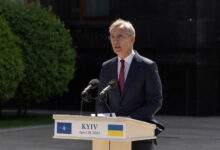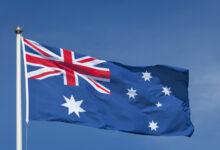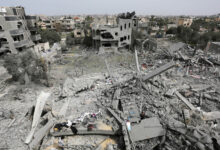
Holding vast swaths of rich land hostage, American forces will never admit they are the source of their own problems

Robert Inlakesh is a political analyst, journalist and documentary filmmaker currently based in London, UK. He has reported from and lived in the Palestinian territories and currently works with Quds News. Director of ‘Steal of the Century: Trump’s Palestine-Israel Catastrophe’.
Robert Inlakesh is a political analyst, journalist and documentary filmmaker currently based in London, UK. He has reported from and lived in the Palestinian territories and currently works with Quds News. Director of ‘Steal of the Century: Trump’s Palestine-Israel Catastrophe’.
@falasteen47

Operations against the PKK and YPG carried out by Arab tribes in Deir ez-Zor continue in rural areas of Manbij, in Syria, on September 06, 2023. © Bekir Kasim/Anadolu Agency via Getty Images
Rival US-backed militants went to battle in northeastern Syria in a conflict originally sparked by ethnic tensions. However, as the situation matured, efforts were made to shift the blame onto Russia, Iran and the Syrian government, despite years of mismanagement and abuses by the American-aligned forces there. While the opposing US-backed militants duke it out for control and Arab tribes stand their ground, Washington is attempting to spin the crisis into a justification for its occupation of the territory.
At least 90 people were killed in clashes between the Kurdish-led Syrian Democratic Forces (SDF) and local Arab militias following the arrests of tribal leaders in the region last week. The conflict had been sparked by a perceived attempt by the US-backed SDF to assert Kurdish ethnic supremacy in the Deir ez-Zor province. The SDF, which is headed by Kurds, also includes a large number of Arabs in its ranks, including in the Arab-majority Deir ez-Zor Military Council militia, headed by commander Ahmed al-Khubayl (Abu Khawla). Al-Khubayl, as well as being a militia commander, is also the emir of the Bakir tribe and his arrest in late August is what initiated the current conflict.
For days, the fighting was limited to the Deir ez-Zor area, where clansmen from the Bakir tribe had taken up arms against the Kurdish-led SDF in retaliation for the arrest of Abu Khawla. After allegations emerged that US-trained SDF fighters had murdered Arab civilians in their homes during door-to-door raids, however, the uprising began to spread. In the village of Daman, where Kurdish special forces had entered and besieged the area, reports indicated that Kurdish fighters had tortured four family members to death in their home in retaliation for the killing of a number of their compatriots. Stories like these, which spread on social media, contributed to a general Arab uprising along the Euphrates river area against SDF rule.
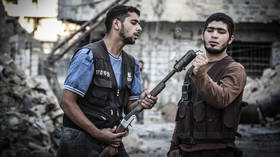
It is important to keep in mind that the SDF essentially works as a proxy force of the US military, enabling it to occupy a third of Syrian territory with a limited number of American ground forces needed. According to the US government, only 900 American soldiers are deployed inside Syria, alongside an unspecified number of private military contractors. This third of Syria is regarded as the nation’s breadbasket, home to the vast majority of the country’s oil wealth and its most fertile agricultural lands. US Deputy Assistant Secretary of Defense for the Middle East Dana Stroul openly admits that holding hostage this third of Syria’s land from the government based in Damascus works to give the White House leverage over the Syrian state.
Instead of addressing the real issues that exist inside the territory, which Aron Lund of the Century International think tank described as a “tinderbox,” the US government and establishment media have run with oversimplified claims about the ongoing conflict. The US-backed SDF claimed immediately that the Syrian government was involved in backing the uprising and attempted to frame the conflict as externally influenced. The reason for this claim is that the SDF seeks to protect its image as a democratic governing force, whose military features progressive all-female units, while also attempting to draw the US more directly into the conflict on its own side. Historically, despite the US having worked alongside the SDF against Islamic State (IS, formerly ISIS) terrorists, when the Kurdish-led forces have come under attack, Washington has repeatedly abandoned its proxy. This happened during the 2018 and 2019 incursions into SDF held territory by the Turkish Army.
Despite the SDF not being a purely Kurdish force, it is clearly dominated by Kurds. This alone had never been enough to spark a revolt from Arab tribes, the majority of which maintained cordial ties with the American-backed governing forces. The reality is that the SDF has conducted itself in a corrupt manner inside northeastern Syria, mismanaging the economy, committing human rights abuses, and even forcibly drafting child soldiers into its armed forces. There have been countless claims of the types of abuses committed by the SDF, including ethnically motivated attacks. Many of these cannot be corroborated, but what is important about these claims is that they add to an environment of contempt in relation to the US proxy force.
After the initial uprising from the Arab tribes along the Euphrates river came a wave of clashes with Turkish-backed fighters and even militants who are backed by the Hayat Tahrir al-Sham (HTS) terrorist group, an Al-Qaeda offshoot that controls most of the Idlib province. It appears as though HTS and Türkiye had both attempted to take advantage of the situation, either for leverage against the SDF or to take control of a greater portion of Syrian territory. While Türkiye treats the SDF as a terrorist group, HTS had actually engaged in joint talks with the SDF for the creation of a shared governing authority earlier this year.
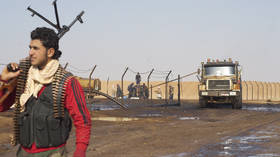
As this was going on, the US readied itself to jump in as an intermediary between the opposing sides in order to calm tensions, warning that the expansion of the conflict could result in a resurgence of IS inside the territory. It is interesting that the US’ pseudo-legal justification for its continued military occupation of Syrian territory came in the form of Operation Inherent Resolve (OIR), which is warranted by the 1991 and 2002 Authorizations for Use of Military Force (AUMF). OIR ostensibly works to target IS but it was revealed earlier this year by the Combined Joint Task Force (CJTF) commander, Major-General Matthew McFarlane, that IS attacks had decreased by 68% in Syria and 80% in Iraq compared to the same timeframe in 2022.
American forces remain in Syria supposedly to continue anti-IS operations, but the terrorist group barely even exists at this time. In reality, therefore, OIR is being continued indefinitely in order to serve Washington’s key agenda of combating Iranian and Russian influence in Syria. The Damascus government is to be undermined at all costs, according to US thinking. A myriad of militants that have received American backing are fighting bloody battles over abuses that were not corrected under Washington’s watch. Instead of accepting accountability, however, it’s seeking to shift blame onto Damascus, Tehran and Moscow, while working to justify its continued occupation of Syrian land.
The statements, views and opinions expressed in this column are solely those of the author and do not necessarily represent those of RT.
